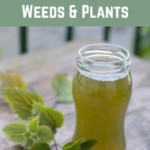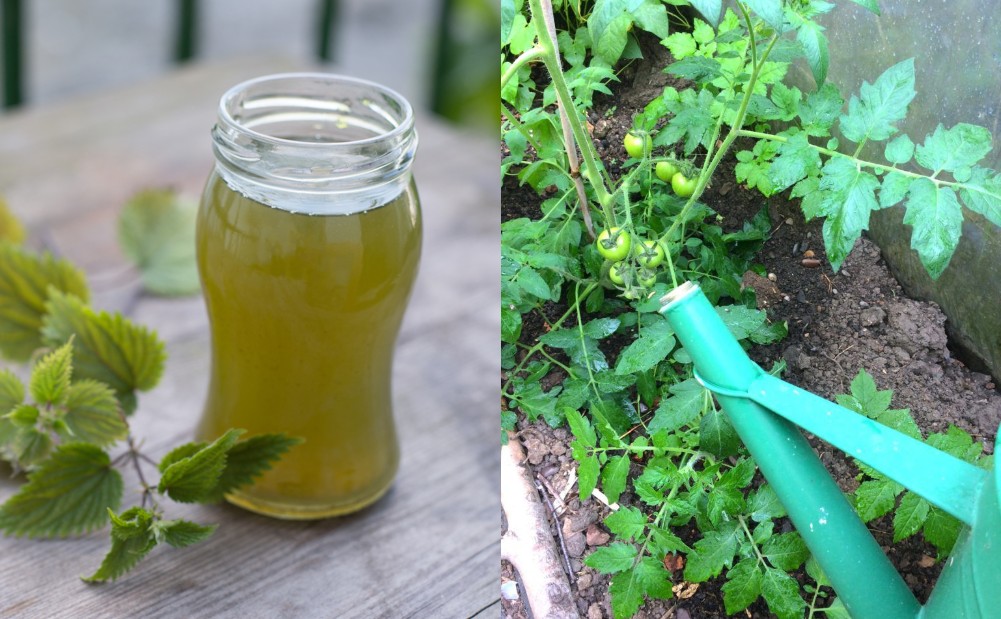
In an organic garden, one of the most important jobs is returning nutrients to the system. There are a number of different ways that you can take the nutrients stored in plants and return them to the soil where they can be taken up by other plants.
You can use them as a chopped and dropped mulch, or add them to your compost heap. But one other way you can use them is as a liquid plant feed, or fertilizer tea.
In this article, we’ll take a look at ten fertilizer teas you can make from weeds and other plants.
All of the fertilizer teas listed below (except the first one) are made in roughly the same way. You add your plant material to water, leave it to stew, then strain it, dilute it, and use it on your garden growing areas.
1. Vegetable Scraps Compost Tea
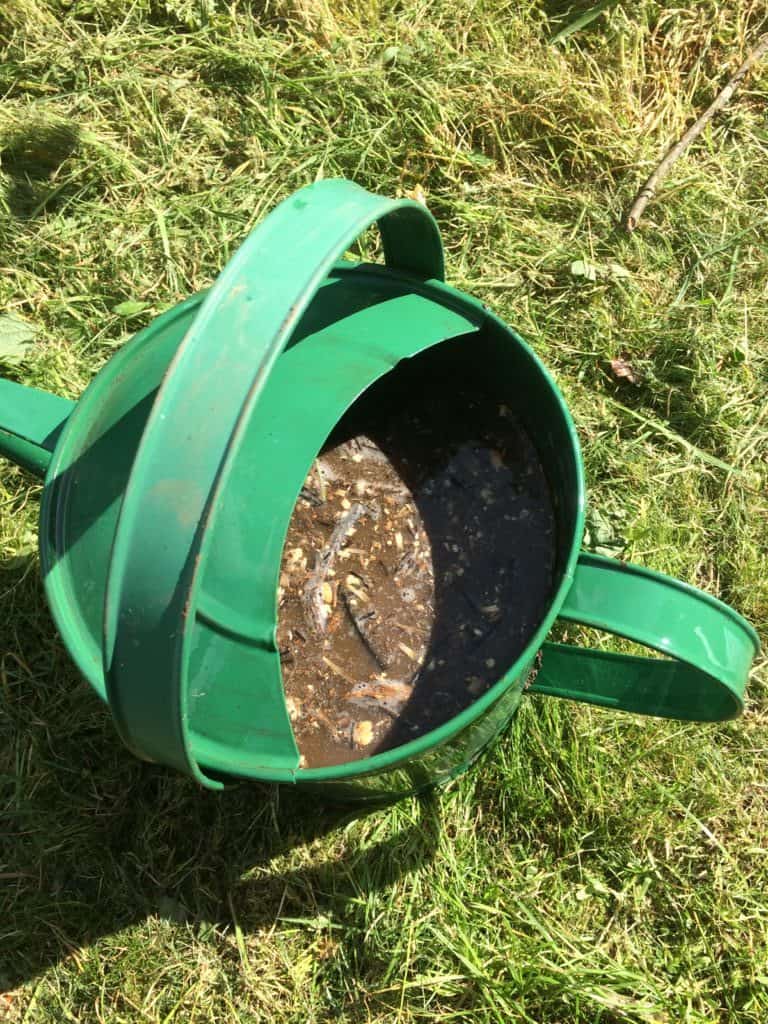
First of all, however, we should note that another excellent way to turn plants into a liquid fertilizer is by composting them first.
Fruit and vegetable scraps and other organic waste can be composted in a number of ways. You can make a simple cold composting system, a hot composting system, or, for example, engage the help of worms in vermicomposting.
If you do not already have a composting system in place, it is important to create one. Composting is, after all, the number one way to return nutrients to your growing areas.
Once you have created compost, you cannot only add it to growing areas or use it to fill pots and containers. You can also use it to make a useful, multi-purpose liquid plant feed – compost tea.
Here’s our step-by-step guide for making your own compost tea.
Note: compost tea can also be used to soak charcoal to make a useful soil amender called biochar for your garden.
2. Green Tea ‘Tea’
If you are just getting started in your garden, you might be able to use plant-based store cupboard items to make your own fertilizer tea for your new growing areas (or house plants).
Green tea, for example, can be brewed not just to drink, but also to feed the plants you are growing. Green tea fertilizer can give a nitrogen boost to aid leafy growth.
Note however, that this should not be added to plants too often, as it can raise the pH in the growing medium.
In order to create better fertilizer teas, it is best to look a little further afield – out and about in your garden and around your property.
3. Comfrey Tea
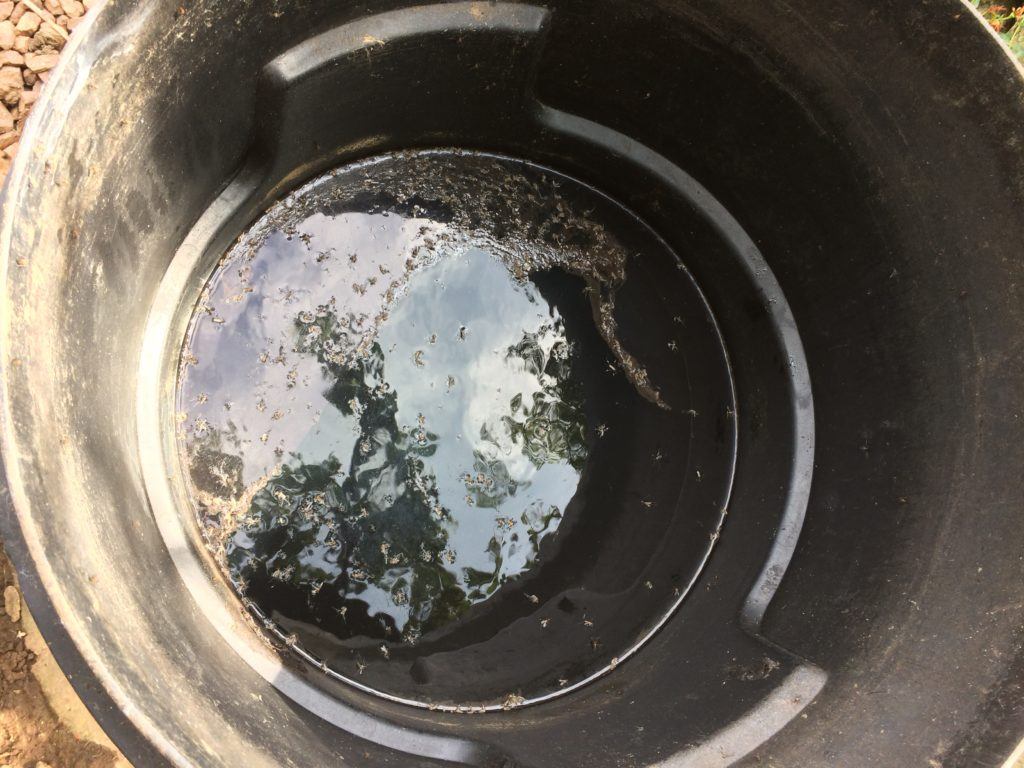
One example of an excellent plant for liquid plant fertilizers is comfrey.
You will find that comfrey liquid fertilizer is an excellent fertilizer for fruiting plants. For example, I tend to use comfrey tea as an alternative to commercially available tomato fertilizers.
It can also, however, have a wide range of applications as a multi-use fertilizer which is suitable for a large number of different plants at different stages of their growth.
Comfrey is a deep rooted dynamic accumulator, and an incredibly useful plant to grow in your garden for a range of reasons.
Comfrey fertilizer tea is rich in potassium, and other essential nutrients for plant growth.
Check out my article here where I explain the entire process for making your own comfrey liquid fertilizer.
4. Seaweed Tea
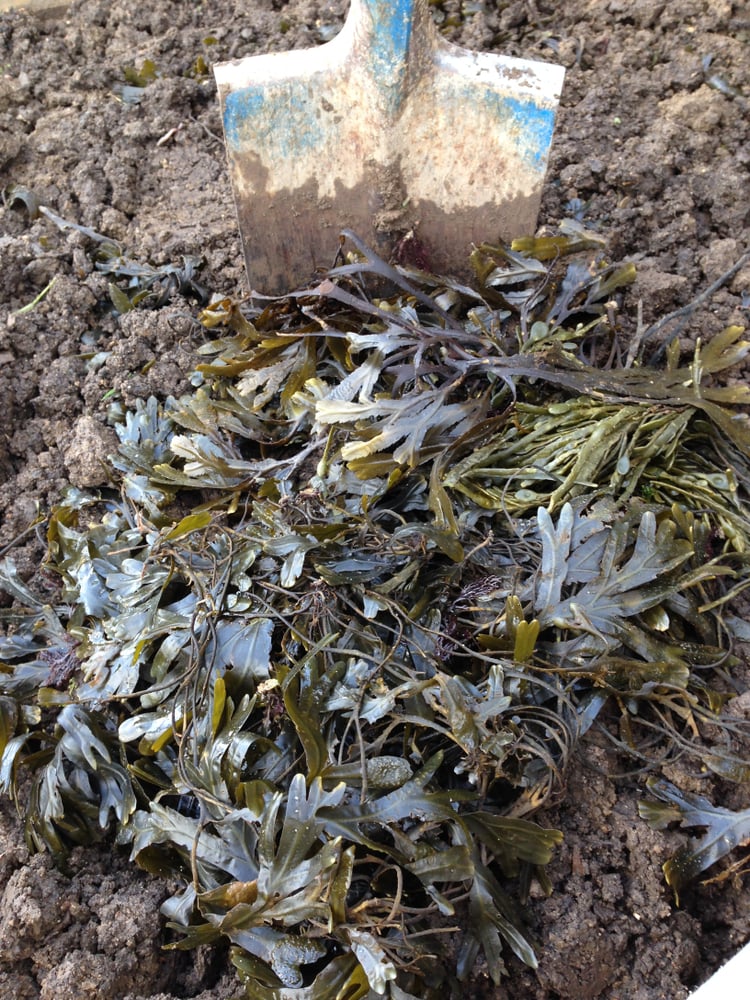
Seaweed is not a plant that will grow in your garden, of course. But if you live close to the sea, it could be a very useful resource.
There are plenty of ways to use seaweed in your garden.
To make seaweed tea:
- Gather your seaweed.
- Rinse the seaweed to remove excess salt.
- Fill a bucket around ¾ full with water, and add as much seaweed as will fit.
- Weigh down the seaweed to keep it under the water.
- Remove the weight and stir the mix every few days.
- Place a lid on the bucket (it will stink!) and leave it for several weeks, ideally at least 2-3 months.
- Strain the mixture and dilute it with three parts water to one part of the mixture. (The remaining solids can be added to your compost heap.)
- Place your seaweed ‘tea’ into a watering can or bottles, and use it around the base of your plants, or spray it on as a foliar feed.
Like compost tea and comfrey tea, seaweed can make a general-purpose fertilizer that can be used for a wide range of different plants.
It is particularly rich in micro plant nutrients and trace minerals which can help foster successful plant growth.
5. Grass Clipping Tea
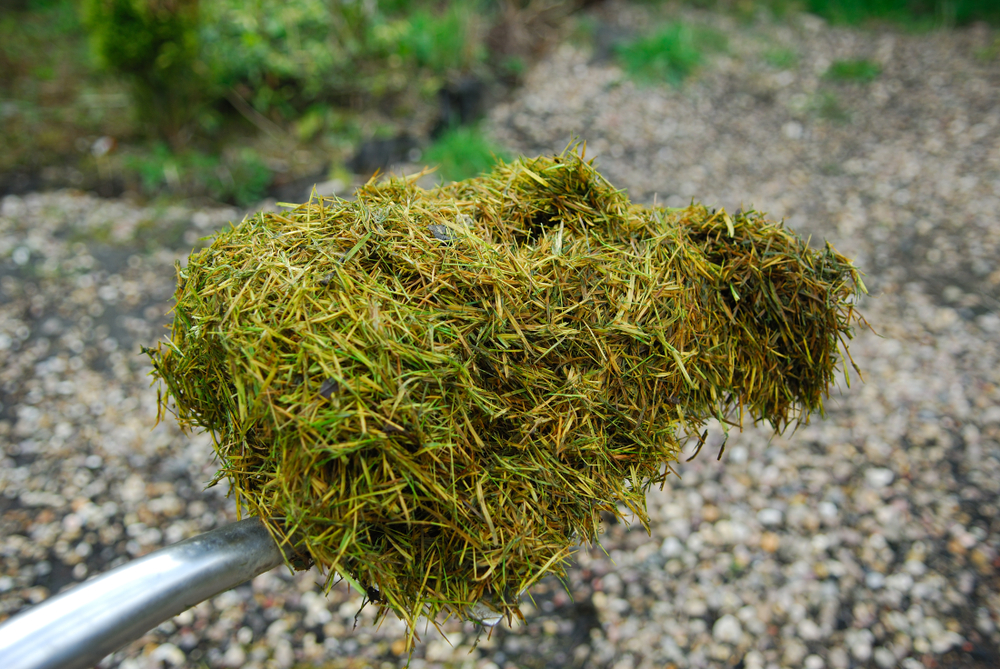
If you are growing leafy plants or vegetables that need a nitrogen boost, a fertilizer tea made from grass clippings/ lawn mowings could be the perfect solution.
If you have a lawn, the grass you cut when you mow can be put to good use. You can use it:
- To return the nutrients to the lawn area (by strewing some in place).
- On your compost heap, alternated with equal quantities of brown, carbon rich material.
- As a mulch around nitrogen hungry plants.
- Or, returning to the subject of this article, as a fertilizer tea.
To make grass clipping tea:
- Fill a container (such as a 5 gallon bucket for a small quantity or a 55 gallon barrel for much more) one third of the way up with grass clippings.
- Fill to the top with water.
- Cover with a cheesecloth or other screen to keep mosquitoes away.
- Allow to stew for two weeks and then it’s ready to use on your plants.
I suggest diluting one part grass clipping fertilizer to five parts water.
6. Nettle Tea
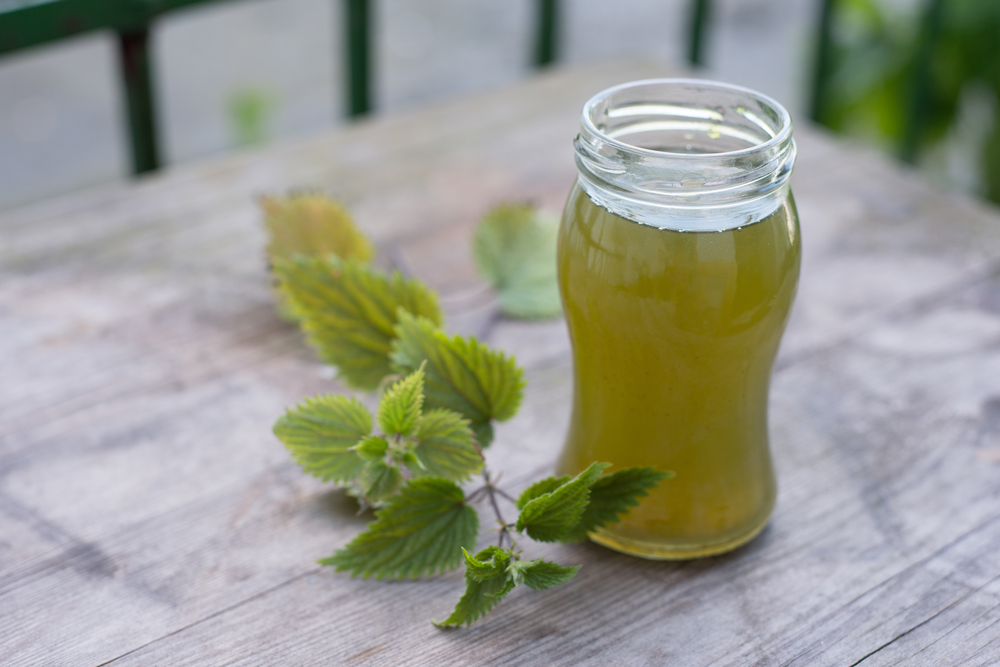
Stinging nettles (Urtica diotica) are another common plant many of us find in our gardens.
Nettles can be added to water to make another liquid fertilizer that is rich in nitrogen. However, it has other nutrients too and is a relatively well-balanced fertilizer that can be used for many plants.
Nettles cut in the spring have the highest nutrient content and are especially nitrogen rich. So a tea made with young spring nettles is particularly good for boosting leafy growth.
There is a quick way to make nettle tea, and a longer method. Find out about both through the link below:
Nettle as Fertilizer @ gardeningknowhow.com.
7. Dandelion Tea
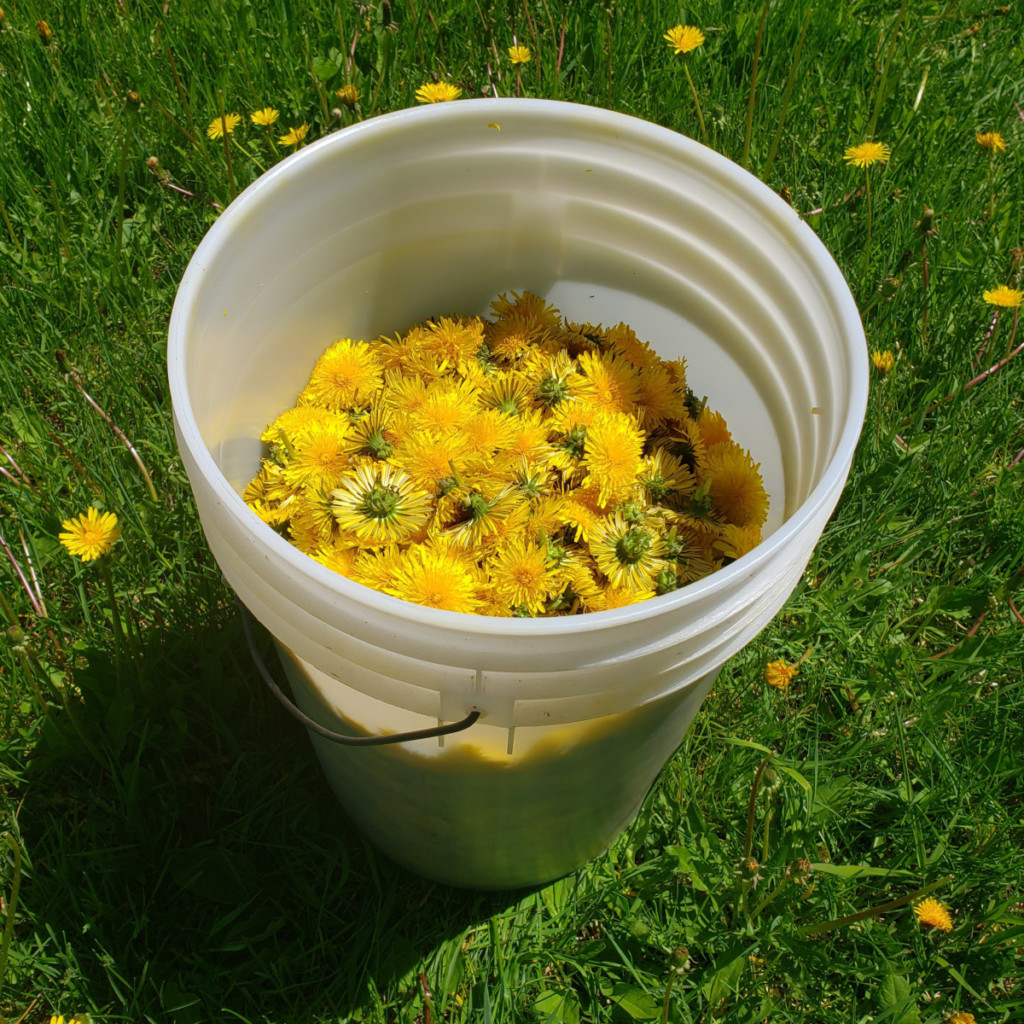
Like comfrey, dandelions are a dynamic accumulator with deep tap roots. Those tap roots draw up nutrients from far below the soil surface. So though they are often considered to be weeds, they can actually be incredibly useful garden plants.
Dandelions are useful because they can make a liquid plant feed that is rich in potassium (great for fruiting plants in particular).
But dandelions are also useful because they are an edible flower.
Check out this list of things to do with dandelion flowers. And remember that you can also eat the leaves in salads, and use the roots too. Dandelions also attract pollinating insects.
So don’t be too quick to weed out dandelions in your lawn or elsewhere in your garden. They have a huge range of benefits, in your garden and around your homestead.
To make a dandelion liquid fertilizer:
- Add dandelion flowers, leaves and roots to a bucket or other container.
- Fill with water, cover with a lid and allow to steep for at least two weeks.
- Strain the mixture. Keep the liquid fertilizer and discard the solids.
- Dilute the dandelion liquid with ten parts water and feed your plants.
8. Yarrow Tea
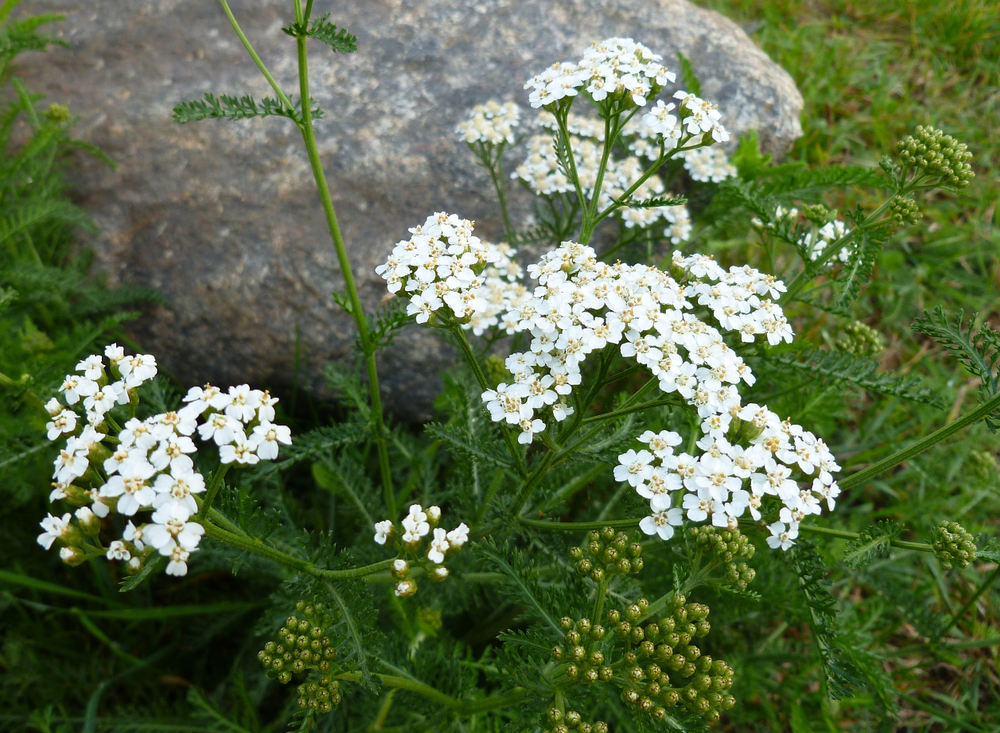
Yarrow is another incredibly useful plant to have in your garden. This is another deep-rooted dynamic accumulator. It also attracts pollinators and other beneficial insects, and has medicinal uses. Yet this too can be considered a weed in some areas.
Yarrow concentrates phosphates, copper, sulphur, potassium and other nutrients which plants require to grow and thrive. One way to return these nutrients to the system is to turn them into a liquid feed.
Check out the link below for instructions on making a liquid plant feed from yarrow:
Yarrow Liquid Fertilizer Tea @ pregrosprayer.com.
9. Borage Fertilizer Tea

One other favourite plant for making liquid fertilizer tea is borage.
Borage (Borago officinalis) is another very useful plant to grow in your garden. Both in flower, and when cut, it has a wide range of uses.
Borage is a great bee-friendly plant, attracting pollinators over its lengthy blooming period. It can be a great companion plant, and can be used as a cover crop or green manure. The flowers are edible too, and have a taste a little like mild cucumber.
Borage is a dynamic accumulator, which concentrates nitrogen, potassium, and other micro-nutrients. So it can also be beneficial when chopped and dropped. Or when its leaves are made into a liquid fertilizer.
To make it, add as many borage leaves and flowers to a container as you can, fill with water and cover with a lid for two weeks. Then strain the liquid and use diluted with ten parts water to feed your plants.
10. General ‘Weed’ Tea
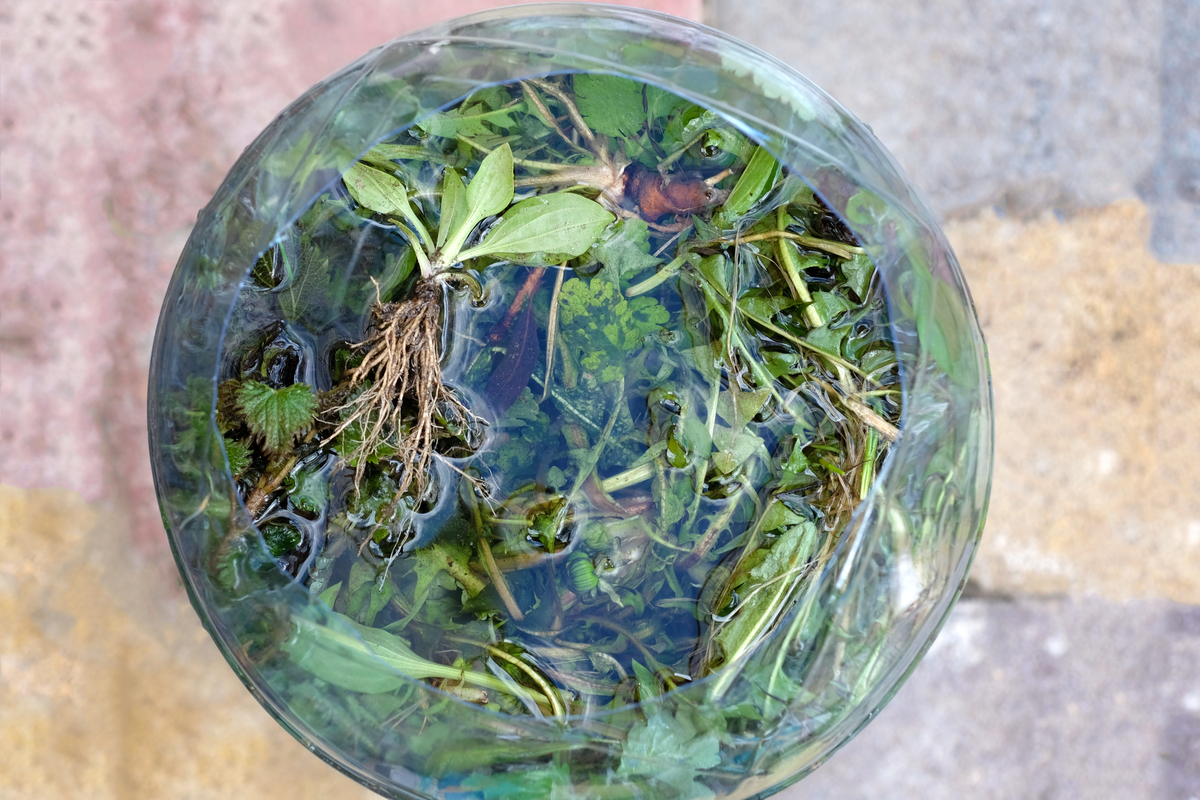
It is important to note that a good multi-purpose fertilizer will have a good range of macro and micro nutrients.
One of the best ways, therefore, to create one is not to choose just one plant for your brew – but to use several. In addition to ‘weeds’ or plants such as comfrey, nettle, dandelion, yarrow and borage, you can also include other ‘weeds’ and plants from around your property.
Some other good plants to include in a general ‘weed’ based liquid fertilizer include:
- alfalfa (for nitrogen and iron).
- arrowroot (for calcium).
- bracken (for a range of nutrients).
- burdock ( for iron).
- chamomile ( for calcium, potassium and phosphorus).
- chickweed (for potassium, phosphorus and manganese).
- cleavers (for sodium and calcium).
- coltsfoot (for a range of nutrients).
- docks (Rumex ssp.) (for calcium, potassium, phosphorus, iron).
- lamb’s quarter (for NPK, calcium and manganese).
- plantains (for a range of nutrients).
- purslane (for calcium, potassium and iron).
- sow thistle (for magnesium, phosphorus and copper).
- tansy (for phosphorus).
- watercress (for a range of nutrients).
It should be noted that dynamic accumulation, and the later availability of nutrients in the soil after the plants/ their nutrients are returned to it, are not fully understood. There has not been sufficient scientific research conducted to verify all claims.
However, it is clear that making a fertilizer tea from a range of plants can help in keeping a garden growing strong. Experimentation can help you to work out the perfect blend of plant materials to use.

Get the famous Rural Sprout newsletter delivered to your inbox.
Join the 50,000+ gardeners who get timely gardening tutorials, tips and tasks delivered direct to their inbox.


